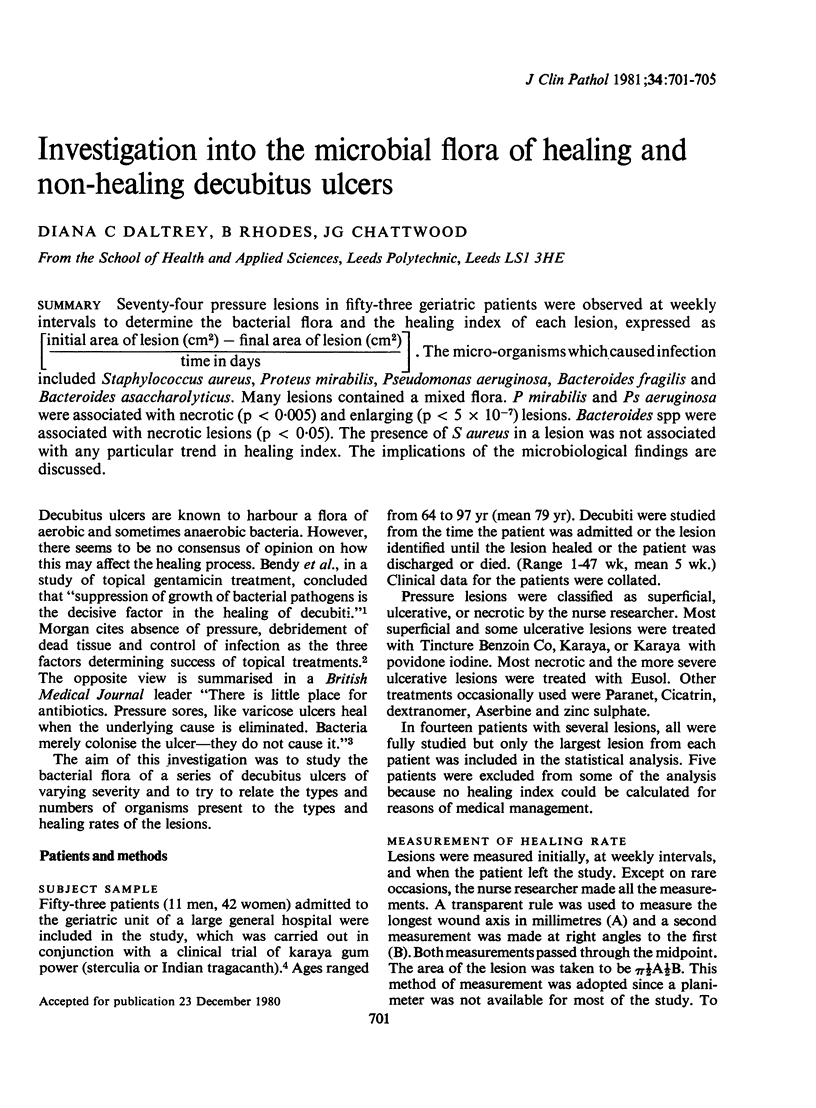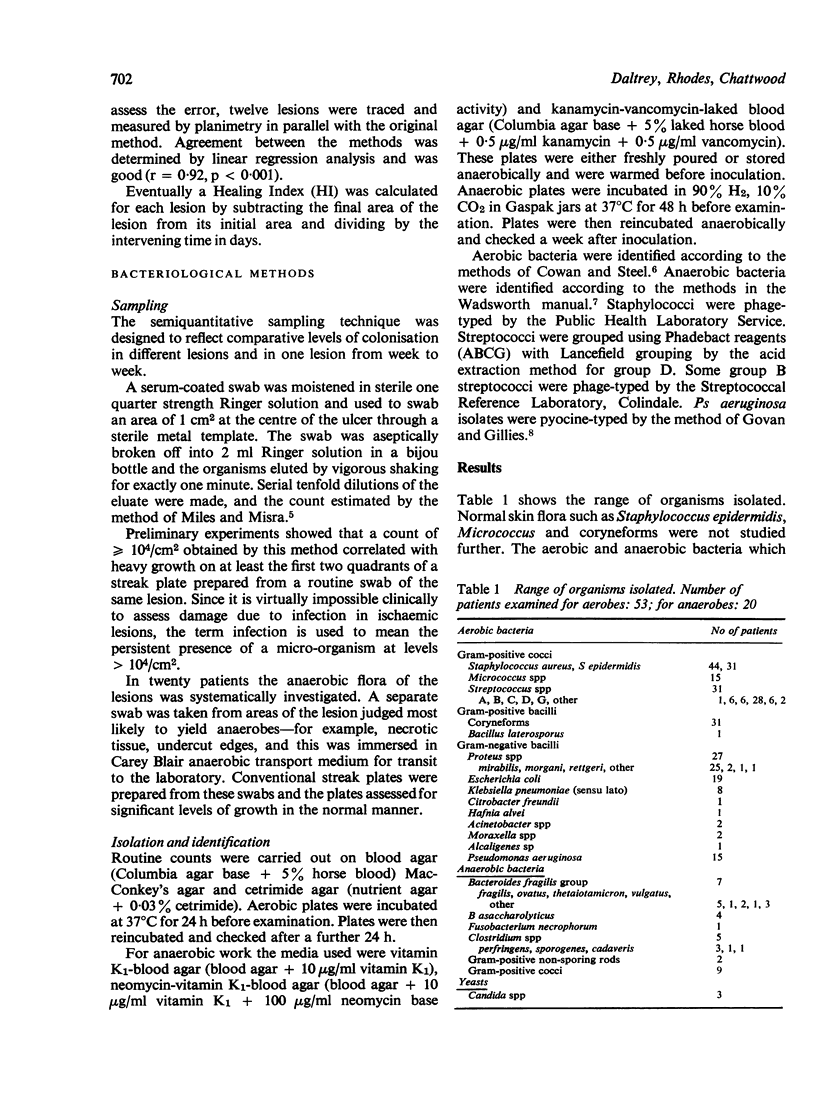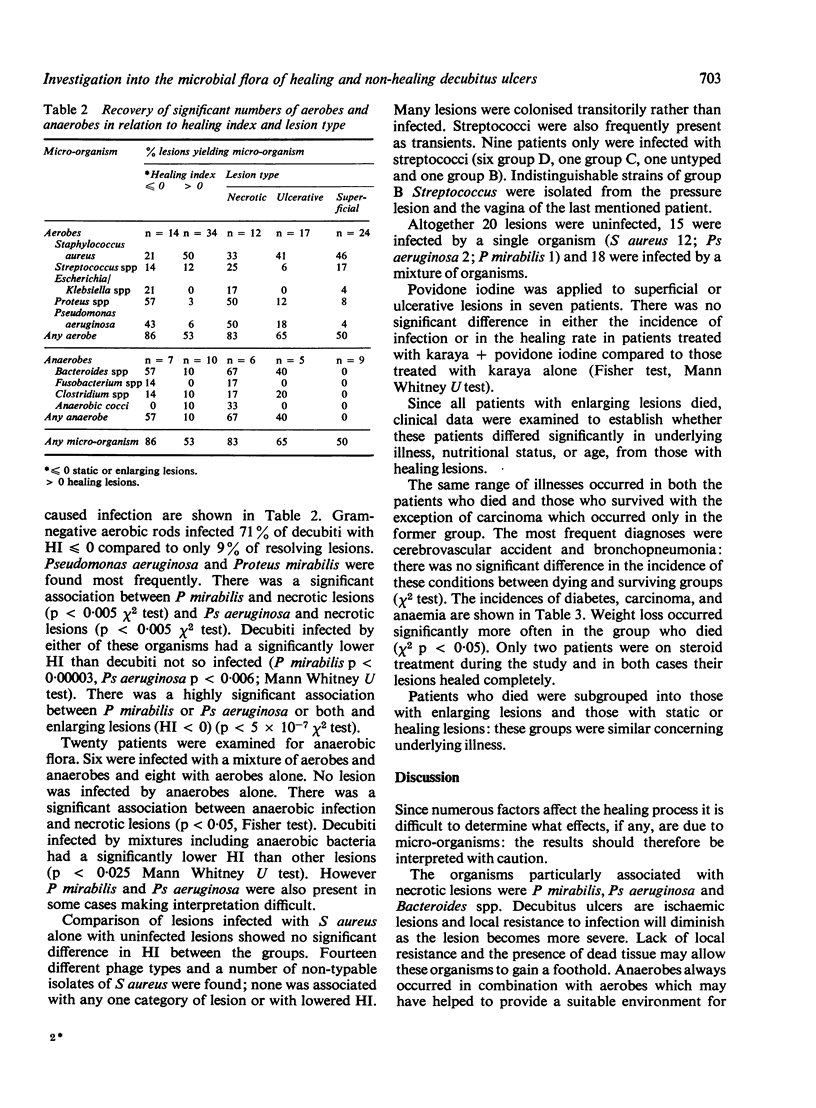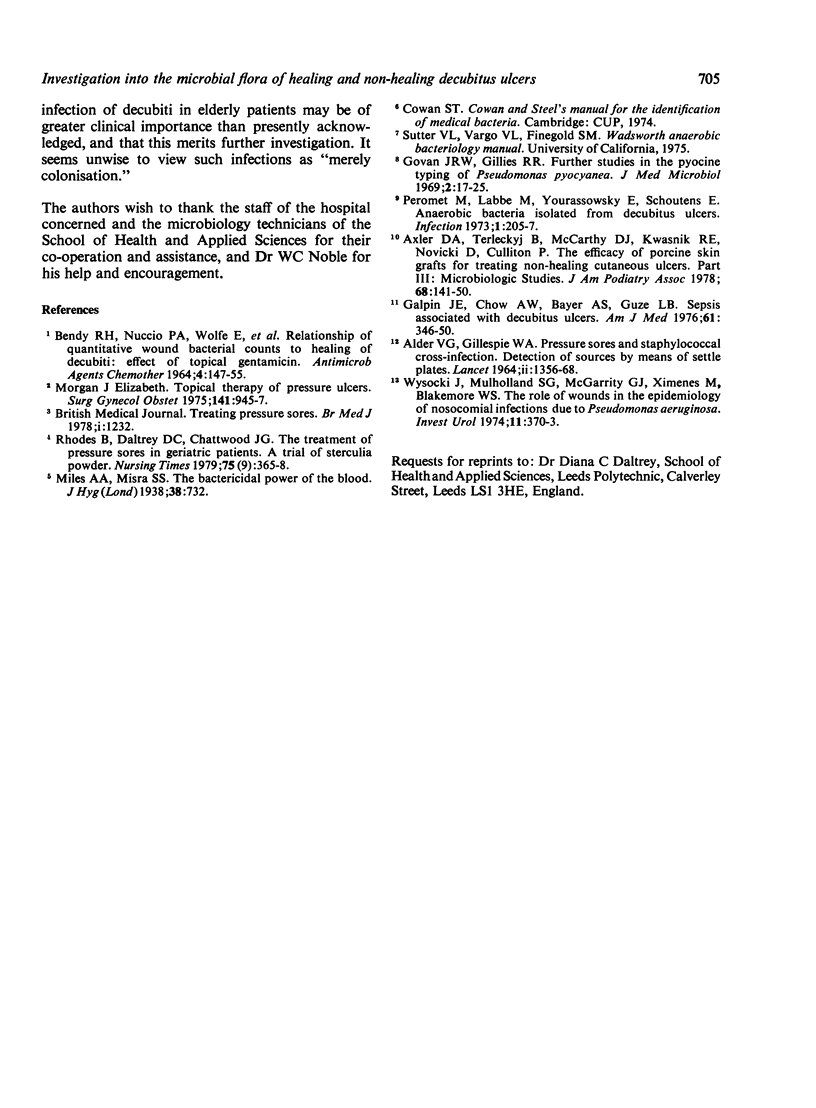Abstract
Seventy-four pressure lesions in fifty-three geriatric patients were observed at weekly intervals to determine the bacterial flora and the healing index of each lesion, expressed as initial area of lesion (cm2) - final area of lesion (cm2) divided by time in days. The micro-organisms which caused infection included Staphylococcus aureus, Proteus mirabilis, Pseudomonas aeruginosa, Bacteroides fragilis and Bacteroides asaccharolyticus. Many lesions contained a mixed flora. P mirabilis and Ps aeruginosa were associated with necrotic (p less than 0.005) and enlarging (p less than 5 x 10(-7)) lesions. Bacteroides spp were associated with necrotic lesions (p less than 0.05). The presence of S aureus in a lesion was not associated with any particular trend in healing index. The implications of the microbiological findings are discussed.
Full text
PDF




Selected References
These references are in PubMed. This may not be the complete list of references from this article.
- ALDER V. G., GILLESPIE W. A. PRESSURE SORES AND STAPHYLOCOCCAL CROSS-INFECTION. DETECTION OF SOURCES BY MEANS OF SETTLE-PLATES. Lancet. 1964 Dec 26;2(7374):1356–1358. doi: 10.1016/s0140-6736(64)91154-7. [DOI] [PubMed] [Google Scholar]
- Axler D. A., Terleckyj B., McCarthy D. J., Kwasnik R. E., Novicki D., Culliton P. The efficacy of porcine skin grafts for treating non-healing cutaneous ulcers. Part III: microbiologic studies. J Am Podiatry Assoc. 1978 Mar;68(3):141–150. doi: 10.7547/87507315-68-3-141. [DOI] [PubMed] [Google Scholar]
- Galpin J. E., Chow A. W., Bayer A. S., Guze L. B. Sepsis associated with decubitus ulcers. Am J Med. 1976 Sep;61(3):346–350. doi: 10.1016/0002-9343(76)90371-5. [DOI] [PubMed] [Google Scholar]
- Govan J. R., Gillies R. R. Further studies in the pyocine typing of Pseudomonas pyocyanea. J Med Microbiol. 1969 Feb;2(1):17–25. doi: 10.1099/00222615-2-1-17. [DOI] [PubMed] [Google Scholar]
- Morgan J. E. Topical therapy of pressure ulcers. Surg Gynecol Obstet. 1975 Dec;141(6):945–947. [PubMed] [Google Scholar]
- Peromet M., Labbe M., Yourassowsky E., Schoutens E. Anaerobic bacteria isolated from decubitus ulcers. Infection. 1973;1(4):205–207. doi: 10.1007/BF01639650. [DOI] [PubMed] [Google Scholar]
- Rhodes B., Daltrey D., Chattwood J. G. The treatment of pressure sores in geriatric patients: a trial of sterculia powder. Nurs Times. 1979 Mar 1;75(9):365–368. [PubMed] [Google Scholar]
- Wysocki J. P., Mulholland G., McGarrity G. J., Ximenes M., Blakemore W. S. The role of wounds in the epidemiology of nosocomial infections due to Pseudomonas aeruginosa. Invest Urol. 1974 Mar;11(5):370–373. [PubMed] [Google Scholar]


